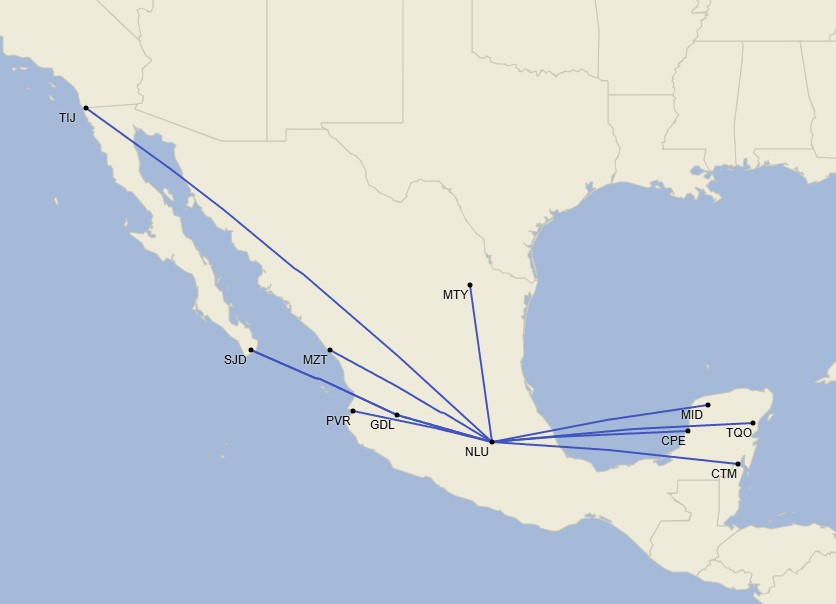Embraer Reveals First Image of E195-E2 for Mexicana de Aviación
Embraer has unveiled the first image of the E195-E2 that will mark the beginning of a new chapter for Mexicana de Aviación. The photo, shared on the Brazilian manufacturer's social media, shows the aircraft during the assembly phase at its São José dos Campos facility in Brazil.
In the message accompanying the post, Embraer highlighted that “by combining fuel efficiency, a modern cabin, and exceptional operating economics, the new E2 fleet will enable the forward-looking airline to expand its network and strengthen connectivity across the region.”
A Fleet in the Making
Mexicana de Aviación, relaunched under government control at the end of 2023, has placed an order for 20 Embraer E2 aircraft, split between 10 E190-E2 and 10 E195-E2. The first aircraft is scheduled to arrive in July 2025.
The delivery timeline was confirmed last month by Mexico’s Secretary of Foreign Affairs, Juan Ramón de la Fuente, following a meeting with Embraer’s VP of Defense and Security Contracts, Fábio Caparica.
During the opening of the Mexico Aerospace Fair (FAMEX) 2025, President Claudia Sheinbaum Pardo also confirmed that deliveries will begin in July, as part of the state-owned airline's renewal and expansion plan.
From Three Aircraft to a New Era
Currently, Mexicana’s active fleet consists of just three Boeing 737-800s, operated by the Mexican Air Force. These aircraft were assigned to ensure the start of commercial operations after the lease on former TAR Embraer ERJ-145s expired.
The arrival of the E195-E2, which can carry up to 132 passengers in a typical configuration, will allow Mexicana to operate more efficiently on short- and medium-haul routes, both domestically and internationally. The aircraft also brings significant improvements in range, fuel efficiency, and passenger comfort.
A Snapshot of the Relaunch
The image released today serves as a symbolic snapshot of the revival process for the historic Mexicana brand. Despite controversies surrounding the project—including military involvement in operations and a lack of transparency around contracts—the arrival of modern aircraft is a tangible sign of progress. Still, the market remains skeptical about the need for a state-run airline in a country already served by three major carriers: Aeroméxico, Volaris, and Viva Aerobus.
With the first E2 now in assembly, the challenge will be to integrate the new fleet efficiently, develop a competitive route network, and position itself as a viable alternative to established private operators.
Where Is Mexicana de Aviación Flying?
Mexicana’s current network from its base at Felipe Ángeles International Airport (AIFA) in Mexico City includes Monterrey, Mérida, Tulum, Campeche, Chetumal, Guadalajara, Puerto Vallarta, Mazatlán, San José del Cabo, and Tijuana.

The scheduled frequencies for the month are:
- Mexico City/AIFA – Tulum: 10 weekly flights
- Mexico City/AIFA – Tijuana: 6 weekly flights
- Mexico City/AIFA – Puerto Vallarta: 2 weekly flights
- Mexico City/AIFA – Mazatlán: 3 weekly flights
- Mexico City/AIFA – Monterrey: 3 weekly flights
- Mexico City/AIFA – Mérida: 5 weekly flights
- Mexico City/AIFA – Chetumal: 4 weekly flights
- Mexico City/AIFA – Campeche: 3 weekly flights
- Mexico City/AIFA – Guadalajara: 2 weekly flights
- Guadalajara – San José del Cabo: 4 weekly flights
This translates to 86 flights and 14,964 seats offered per direction, according to Cirium data.
Mexicana faces direct competition on most routes from the country’s three private carriers: Chetumal (Viva), Guadalajara (Aeroméxico, Viva, Volaris), Mérida (Aeroméxico, Viva, Volaris), Monterrey (Aeroméxico, Viva), Mazatlán (Viva), Puerto Vallarta (Aeroméxico, Viva), San José del Cabo (Viva, Volaris), Tijuana (Viva, Volaris), and Tulum (Aeroméxico, Viva).

/https://aviacionlinecdn.eleco.com.ar/media/2025/05/primer_embraer_e195_e2_de_mexicana_de_aviacion.jpeg)
Para comentar, debés estar registradoPor favor, iniciá sesión